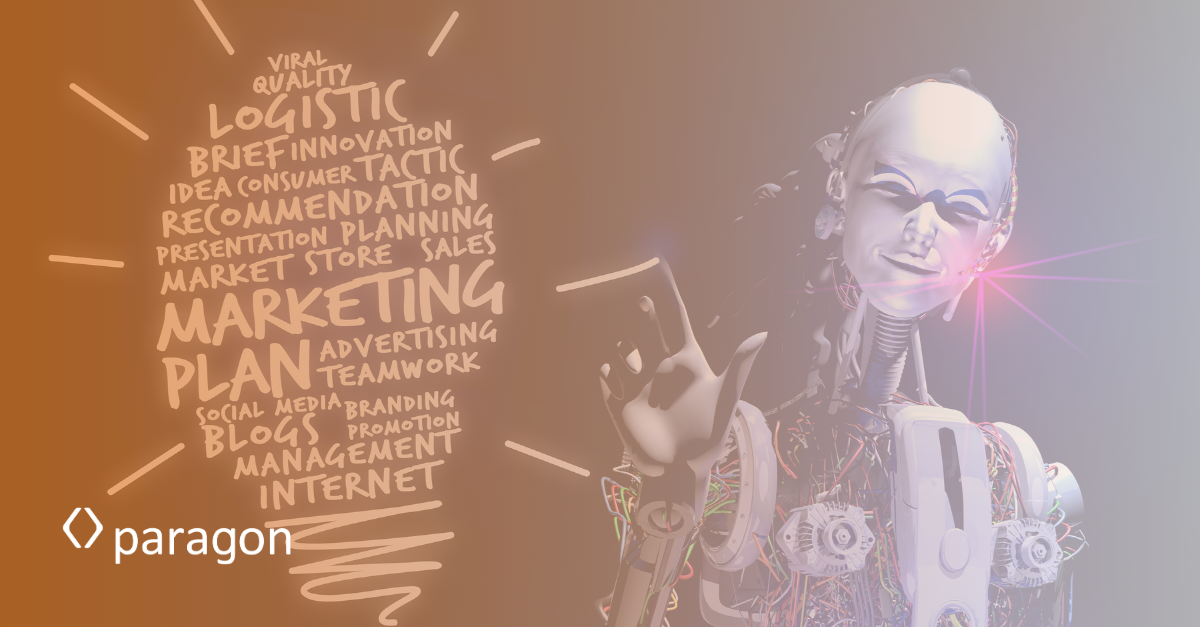5 Trends Shaping the Future of Marketing
New technology has made creating content easier than ever. But creating content that stops people scrolling or switching channels has never been more difficult because competition to gain consumers’ undivided attention is fiercer than ever. The digital marketing space is a little like the Klondike with rapidly developing technology – especially the mystical world of AI – forcing marketers to stake a claim in the unknown. Even trusted TV is being supplanted by streamers. It will be fascinating to see what trends emerge this year, but here are five to keep an eye on.
AI – amazing potential but trust comes first
For some reason, AI reminds me of the Fosbury Flop. A new way of doing things that changes everything. There was a limit to how high humans could jump and then Dick Fosbury changed the game. With Generative AI, however, it’s far too early to even consider the limits. It’s a real challenge for marketers who want to understand AI’s potential – to both generate valuable insights and content assets – and hence optimise their budgets. It will transform how content is created, delivered, and consumed. Hyper-personalized content, for example, is generated based on consumer behaviour, preferences, and demographic information. AI will help marketers create content that encourages customers to turn awareness into spending. The content – blogs, videos, podcasts – will be based on customers’ historical interactions with the brand, their browsing history, and even their social media activity. Most marketers (68%) are positive about including the new tool in their box of tricks, according to Kantar, but trust is an issue. What is the provenance of the data used by marketers? What is the source of ads seen on social media and other channels? Almost half (43%) of consumers say they don’t trust AI-generated ads. Expect some bands to get it right and jump higher than ever; others will… flop.
Voice Search and Audio Content Optimization
Siri, Alexa and the rest of the voice-activated systems – or should I say intelligent personal assistants? – are all around us. By the end of this year an estimated 75% of US households, according to Linkedin, will have a smart speaker. We all use them more often. I often think my son is talking to himself but he is asking Siri for the name of a song, the time a film starts or to set a timer for his brownie cooking project. So voice search will be more important in 2025 as part of a content marketing strategy. To be optimised for voice searches – which tend to be more chatty and conversational than written ones – some brand content should be more conversational. Potential customers are asking for full sentences and not just a few keywords. Voice assistants need complete answers. So FAQ formats are very effective… just so long as the answers are conversational.
Brands to exploit creator communities
Individuals with their own brands and online audiences have emerged as one of the biggest developments of the digital age. These creators are establishing new communities – about health, parenting, DIY, beauty, tiddlywinks, or any other activity that connects humans – and rapidly building influence. This flourishing space – it was a $250 billion industry in 2024, according to Goldman Sachs, and could reach $480 billion by 2027 – has huge potential for brands. The best creators have an authentic and independent voice that engages consumers. If brands can convince the right creator to laud their products, logic goes, then the influencer will do the work convincing the consumer. Brands must ensure their creator-led content accurately aligns with their overall strategy across all channels. Authenticity and consistency – as ever – is vital.
Social Media – the competition is fierce
In 2023, 43% of consumers said ads on social media captured their attention, according to Kantar, but the figure dropped to 31% in 2024. All that creative effort is clearly not creative enough given the rising competition. We demand more. To successfully grab our attention, humour and music will continue to be important but expect to see less generic content. AI, of course, will play its part, but so too will other technologies such as Augmented Reality (AR) and Virtual Reality (VR). Brands will increasingly use them – in social media and elsewhere – to create more immersive product demonstrations and experiences. Imagine brands giving you the chance to take a virtual tour of their showroom, to see yourself wearing that cool jacket you dreamed of buying, and to interact with the brand in a variety of compelling new ways. The target is to grab and retain attention – that marketing buzzword of the last few years – which is so essential for boosting campaign effectiveness and sales.
It’s Livestreaming Show Time – who needs TV?
In China platforms like Taobao Live, Douyin and WeChat reach an astonishing half of the population for entertainment and, yes, you guessed it, shopping. Live-commerce sales could hit 20% of total retail in China by 2026, according to McKinsey, with smartphone-happy GenZers and Millennials leading the way. Live commerce is entertaining and immersive, keeping viewers watching longer. The sales funnel is suddenly super short with “entertained” customers moving quickly from awareness to purchase. Tried and tested tactics like one-off promotions add to the pressure. And effectiveness. Even the smallest brands can succeed – the make-up brand Made by Mitchell’s made $1m sales during a single 12-hour UK TikTok Shop event.
Here at Paragon, our mission is to keep a close eye on new marketing trends so we can exploit any changes in technology or behaviour to create the best possible content strategies. If you are looking at launching a campaign to grab – and retain – the attention of existing or new clients, then we would love to hear from you.



